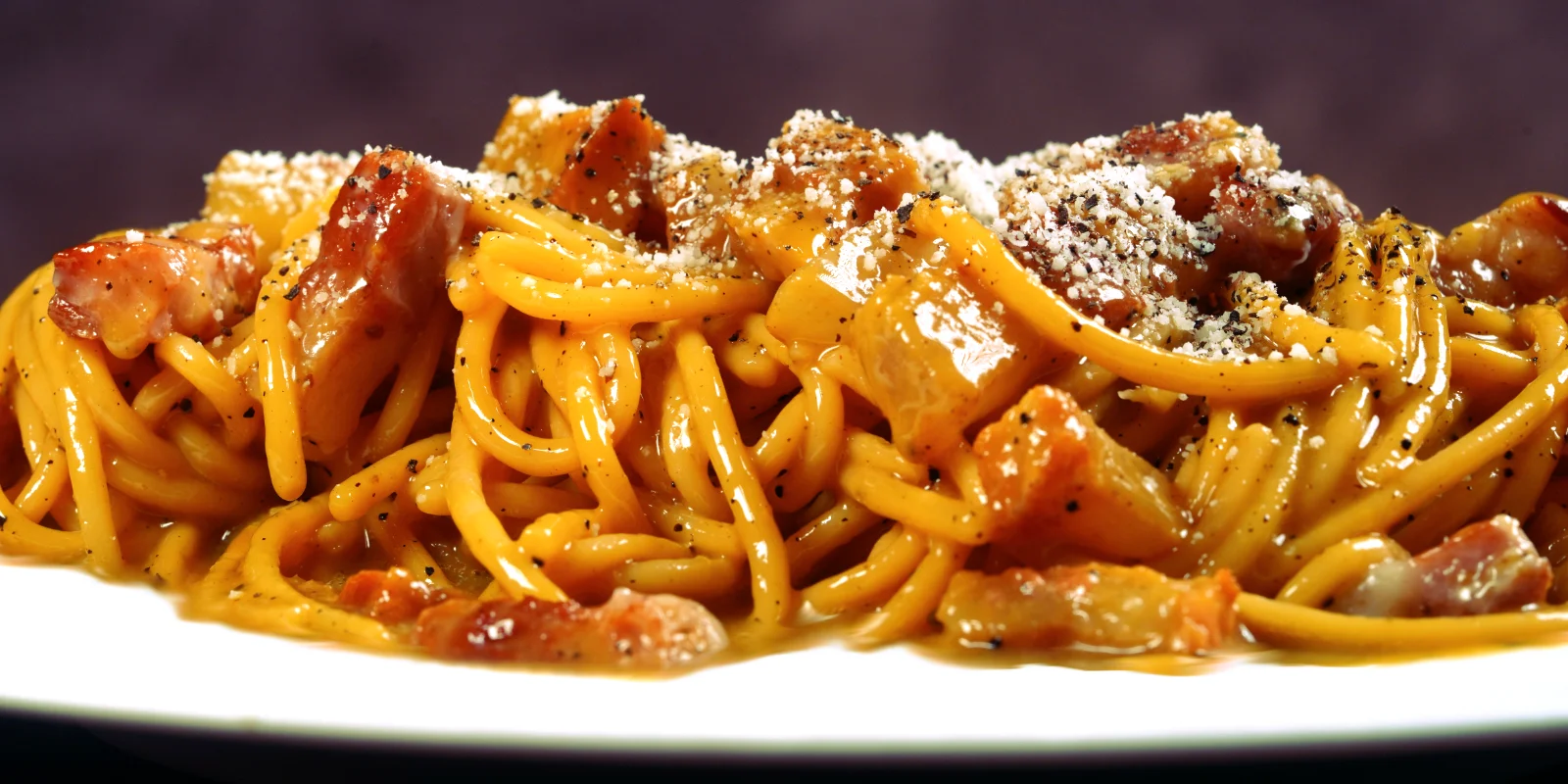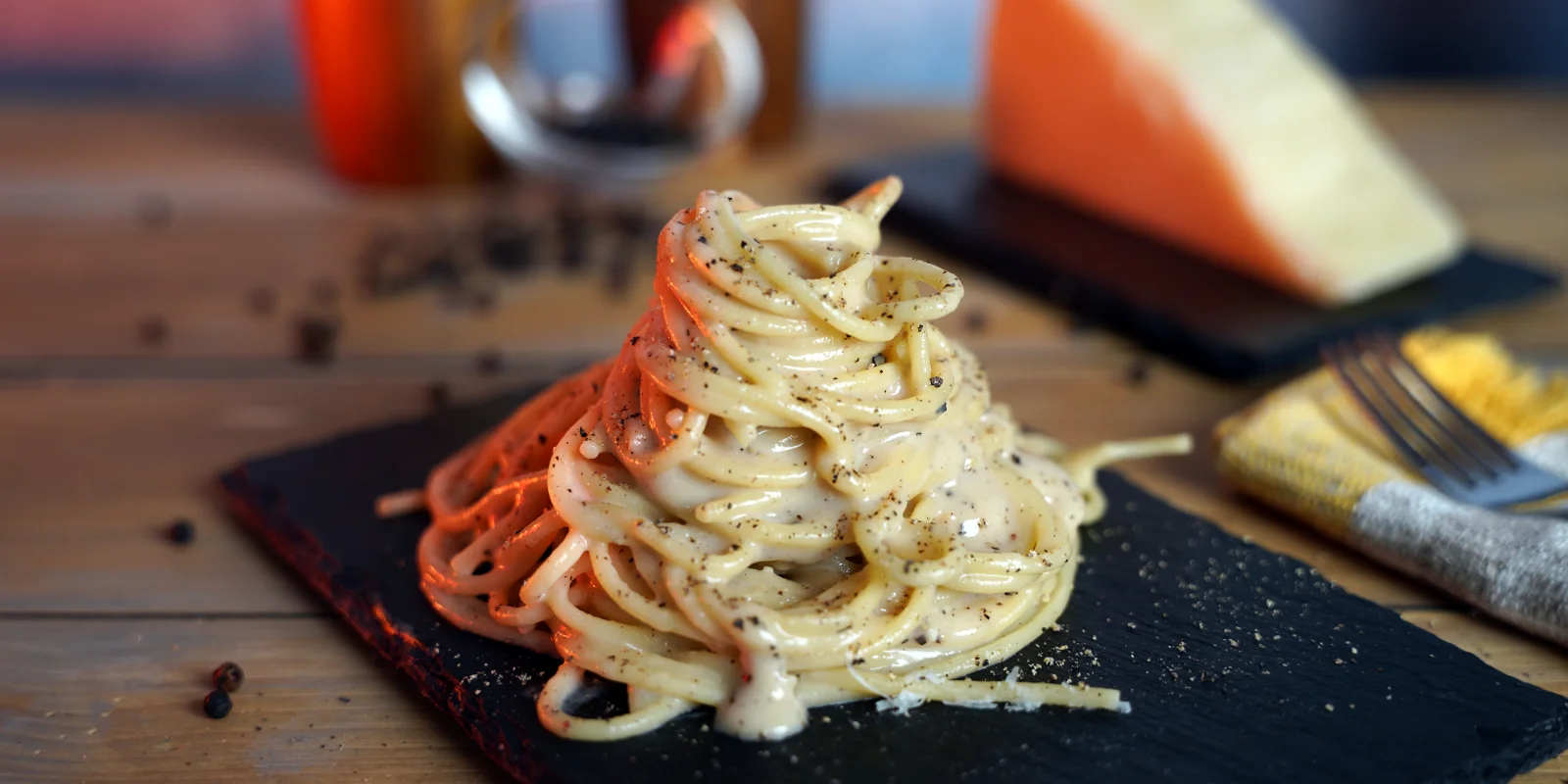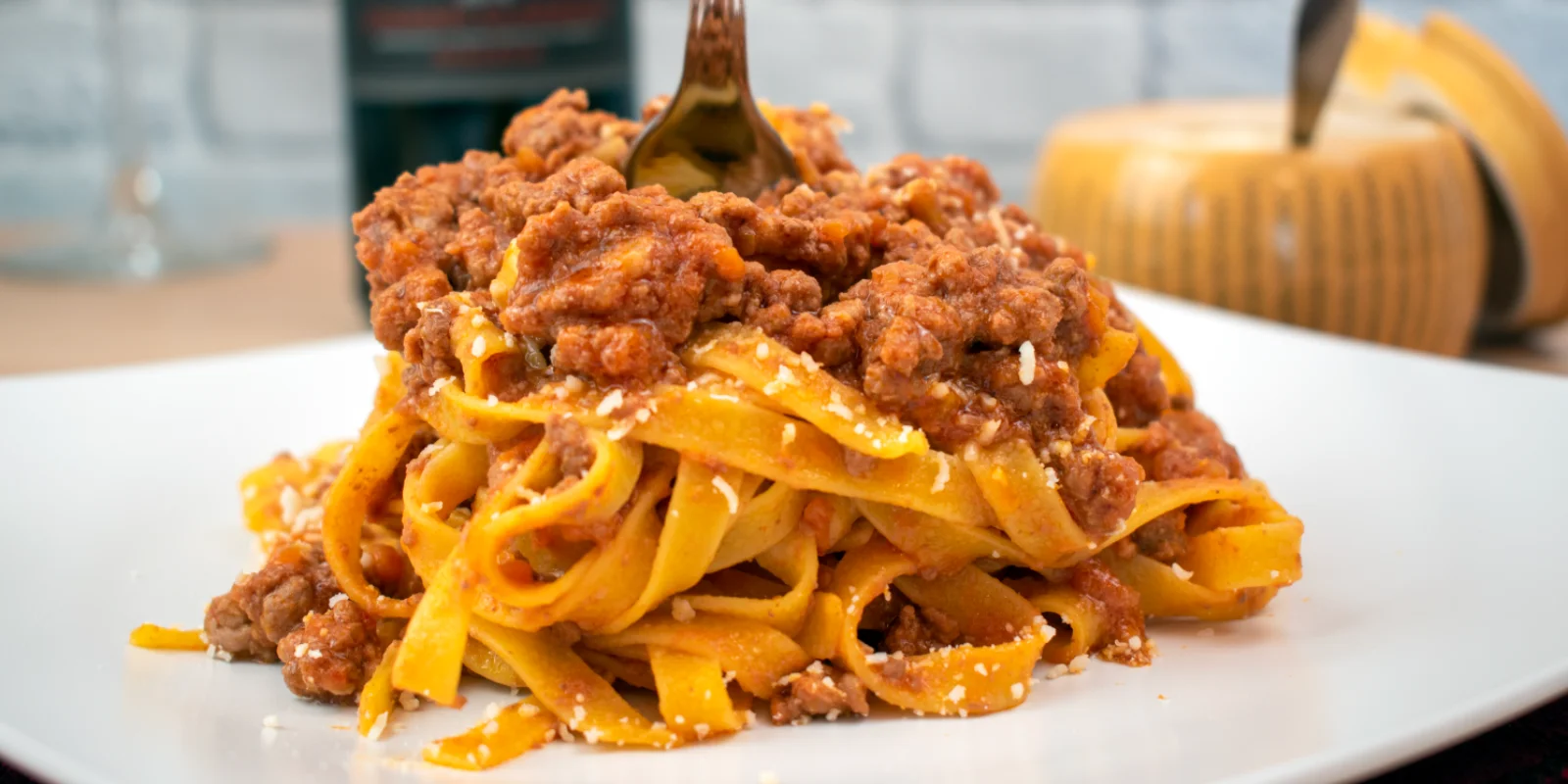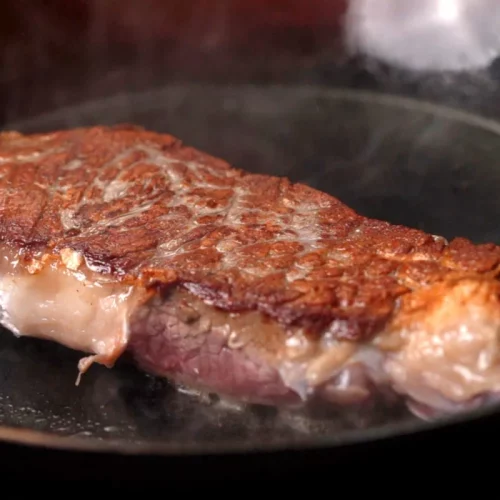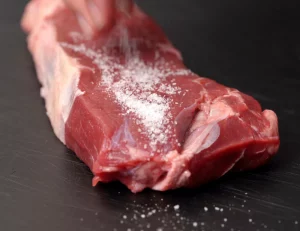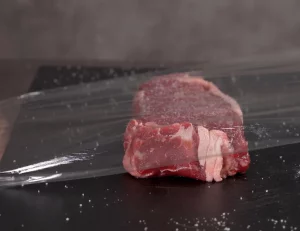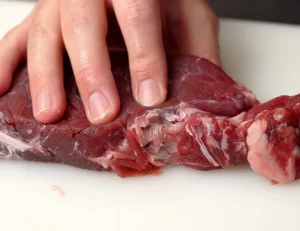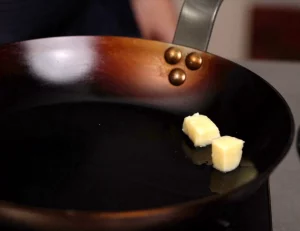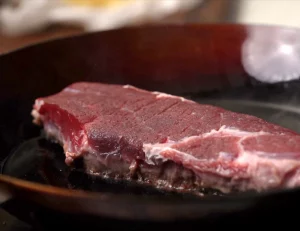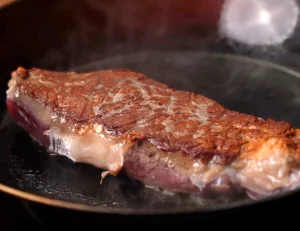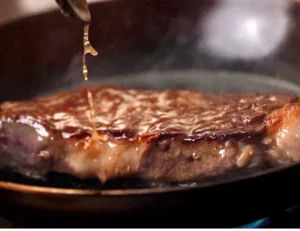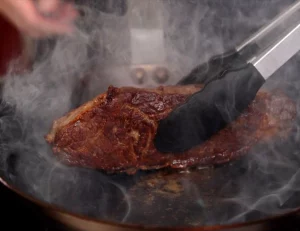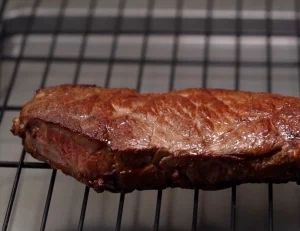In this guide, you’ll learn how to cook sirloin steak in a pan perfectly at home! Serve it intact, or follow our recipe for the best Italian steak to learn how to cook and serve a sirloin steak in thin slices as a Tagliata.
To watch us cook a steak in a fireplace, check out our video on Bistecca alla Fiorentina (Florentine Steak)!
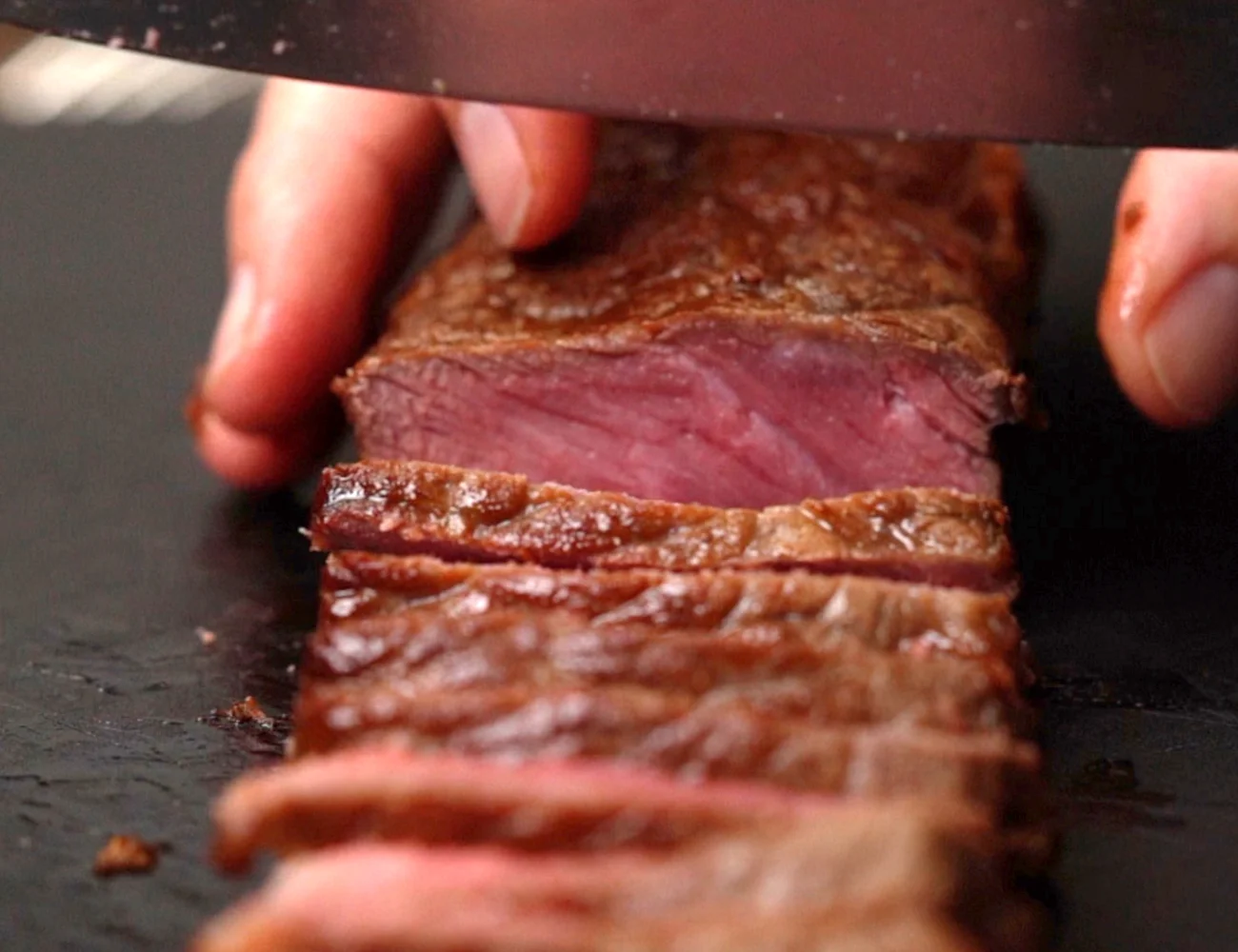
Watch the Video Recipe!
Check out our video recipe on the best Italian Steak Recipe (Tagliata) to learn how to cook a sirloin steak in a pan—perfectly—every time. Turn on the subtitles to watch this video in English. Coming soon (narrated in English).
Subscribe to our YouTube Channel
More video recipes? Subscribe to our YouTube Channel (it’s FREE) and click the bell to get notifications when we release a new video recipe!
How to Cook Sirloin Steak in a Pan
Though a grilled steak is delicious, cooking a sirloin steak in a pan is both easy and will produce a delicious result. Just be sure to use the right tools for the job!
Assuming you’ve already selected a quality sirloin steak, the first step is to salt that steak correctly!
Salt the Steak.. Then Wait 2 Hours
Salt the steak generously on both sides, pressing the salt into the meat. Then, let the steak rest for a couple of hours.
Salting is a critical step! To explain why (with a bit of science): When we add salt to our meat, we alter the osmolarity within the fibers of the meat. Naturally the juices will be attracted towards the surface (where the salt is). However, as the salt distributes inside the sirloin, the juices will also redistribute and an osmotic balance will be once again reached.
That means if we wait a couple of hours after salting, very little juice from the steak will be lost.
Do not listen to the alleged experts especially on the net who advise you to salt only at the end of cooking…
These are people who carry on out of routine, mechanically, out of preconceptions… and I’m also talking about chefs, not just enthusiasts…
Don’t listen to so-called experts who advise to only salt at the end of cooking the meat. It’s fine to add a sprinkle of fine, coarse of flake salt at the end, but that salt will never penetrate the meat. The result will be meat that is overly salty on the surface and lacking flavor inside.
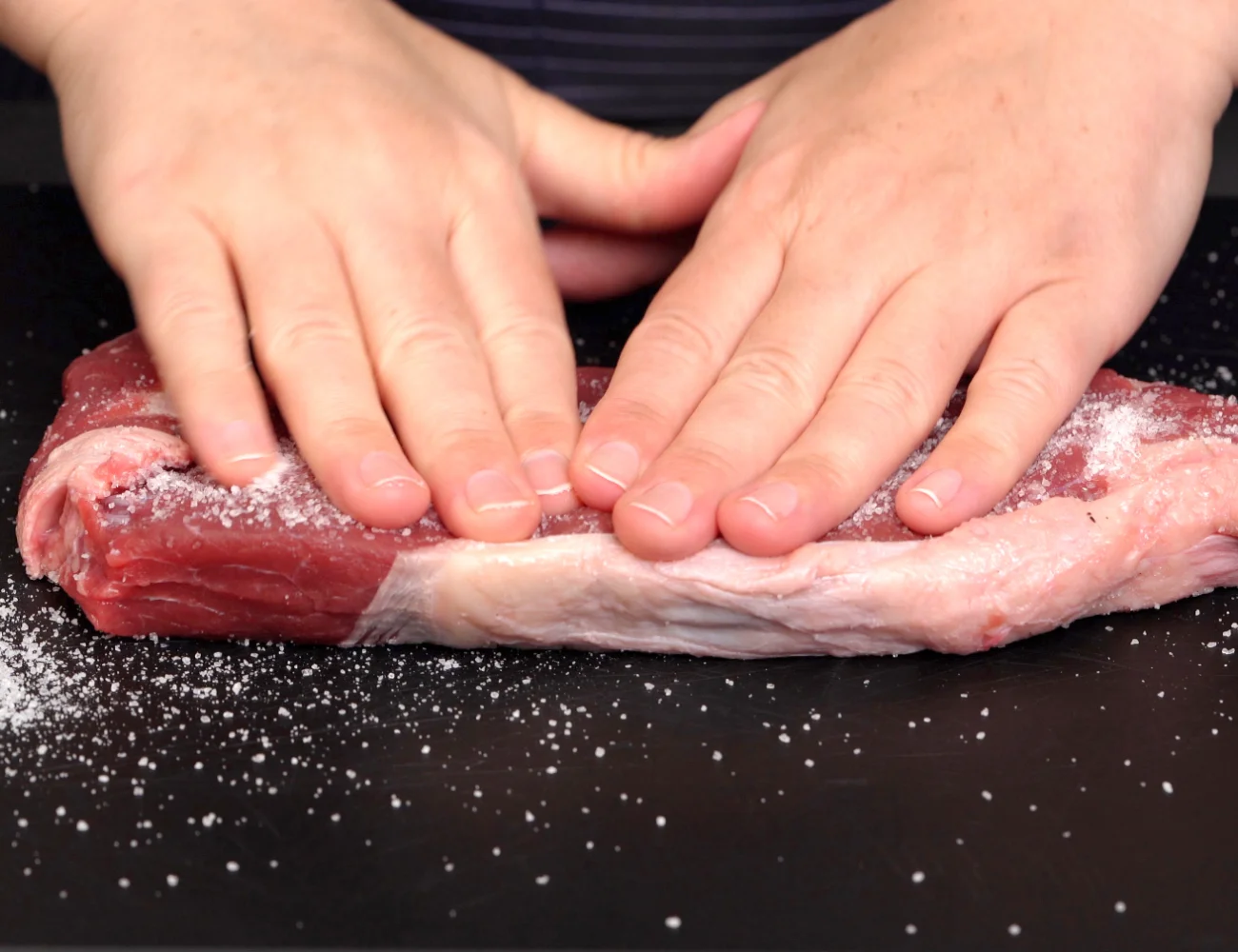
After salting, wrap the steak in plastic wrap and put it in the fridge for 2 hours.
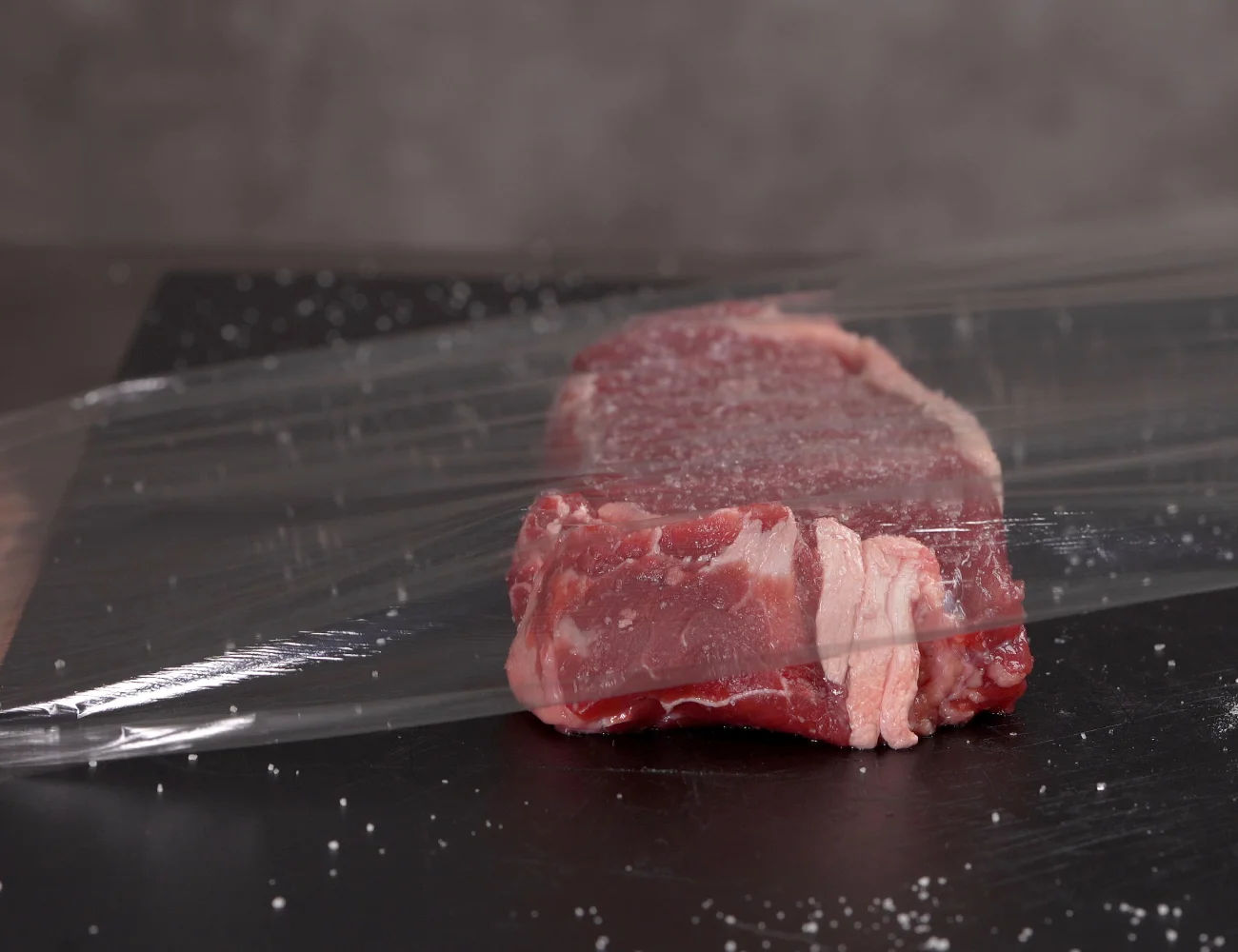
After the 2 hours rest, let the steak come to room temperature for about 1/2 hour before cooking it. During the rest time, you can prepare any sauces or condiments you may want for your finished steak.
After the 2 hours, the steak will have lost very little juice. At this time, we remove any excess fat or extraneous parts of the steak which we then use for stew.
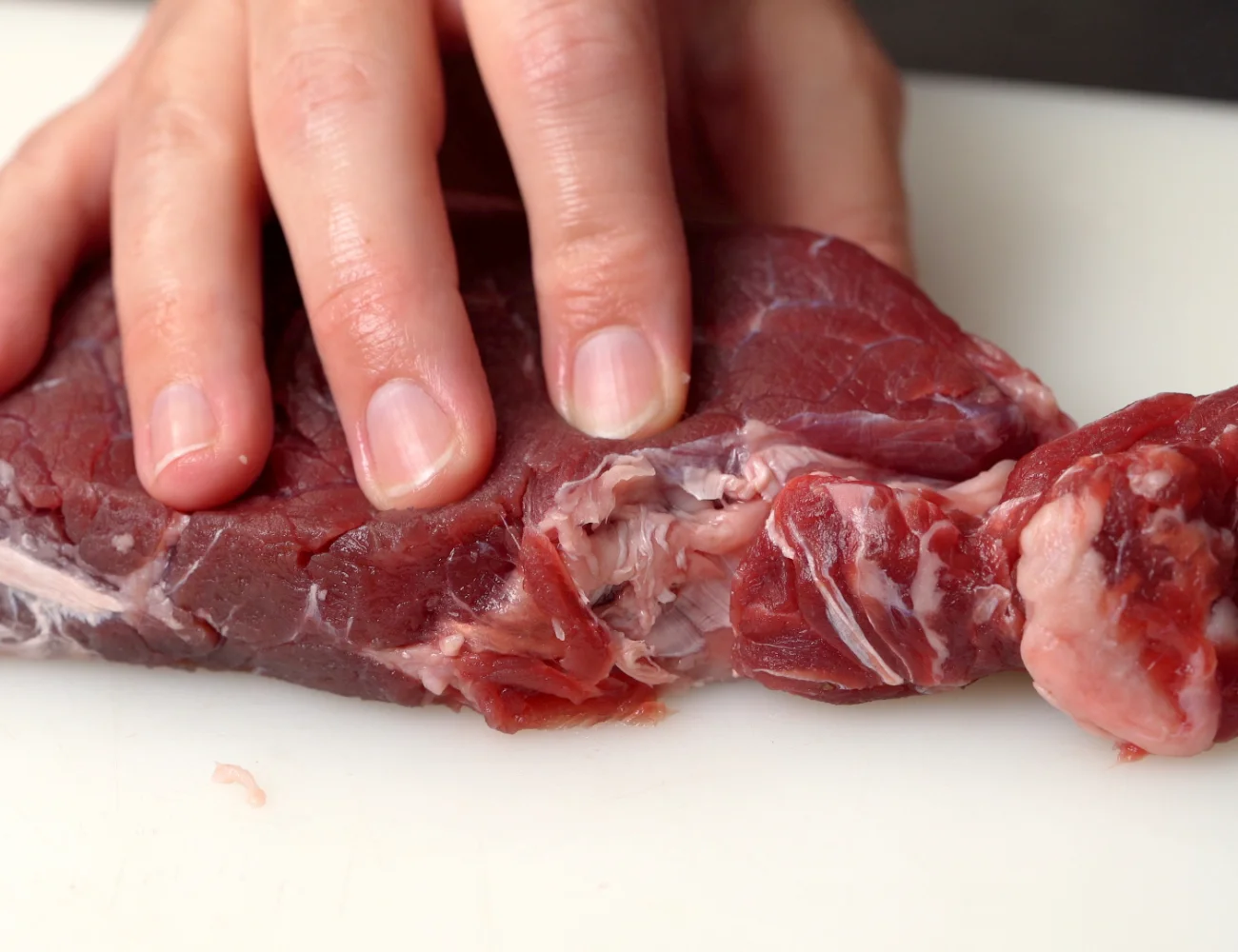
Cooking the Sirloin Steak
The Right Pan—and Fat— for the Job
You’ll want to use clarified butter to pan sear sirloin steak. Clarified butter has a very high smoke point and you can easily make it at home from regular butter! Learn how to make clarified butter at home in our other guide! Or, buy clarified butter from the grocery.
Just as important as choosing the right fat for cooking a steak is selecting the right pan for the job.
Use a seasoned cast iron or carbon steel pan. These pans take a bit longer to heat up, but retain heat very well for an even cook. All this translates into a homogeneous and above all fast cooking time. Also? We are using high heat to pan sear our steak —around 662° F (350° C) —so this high heat will irreversibly warp a pan that is not suited for the job.
Here’s the pan we use, as seen in the photos and video (affiliate link):
- Carbon Steel Pan, 11″: https://amzn.to/3Mt9bru
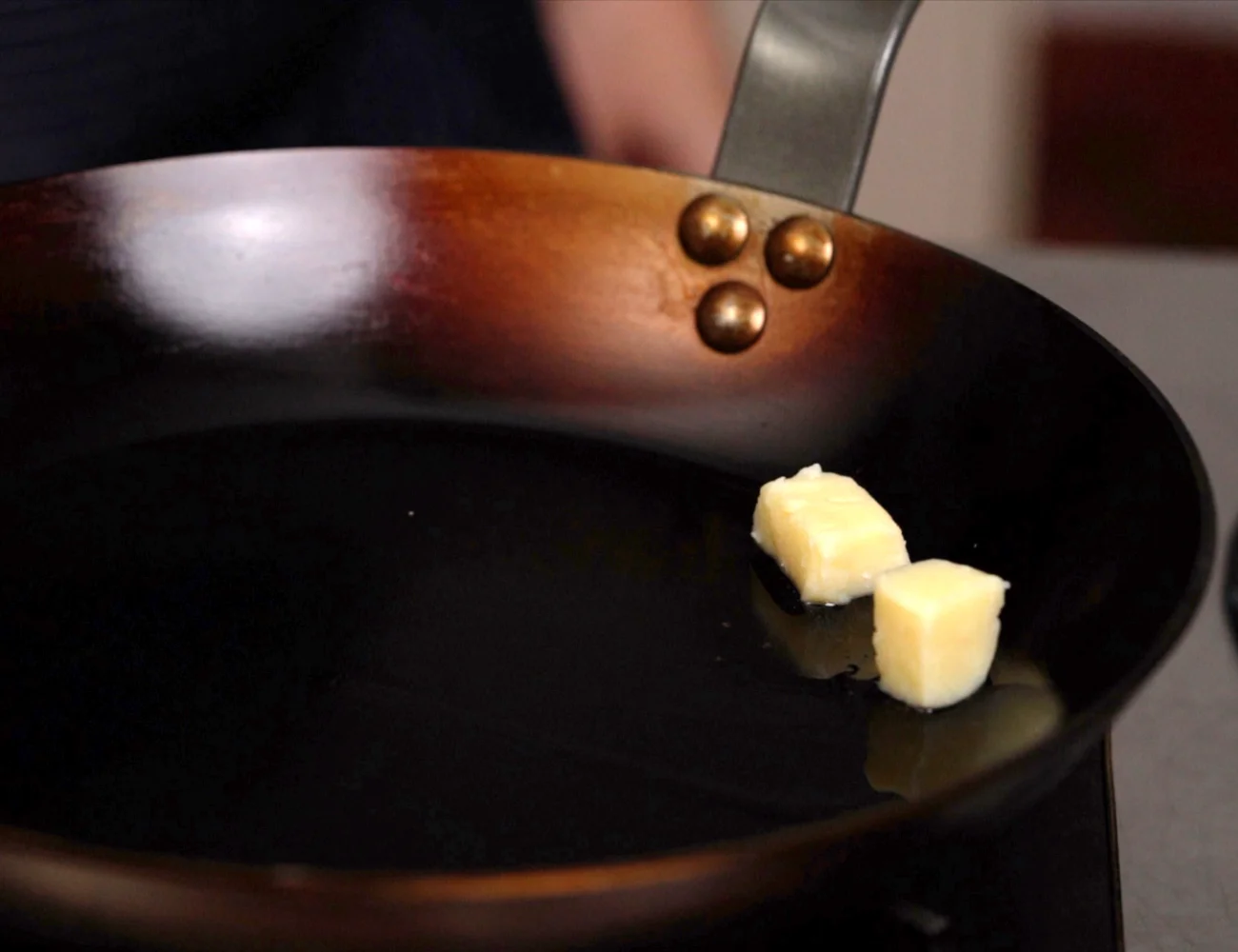
Cook the Steak in a Pan on High Heat
When the pan reaches a temperature of around 662° F (350° C), it’s time to cook the steak! The goal is to produce the Maillard reaction as quickly as possible in order to minimize the loss of juices. This reaction is already triggered above 120° C, so we have a stronger reaction at the 350° C that we are using to cook the steak.
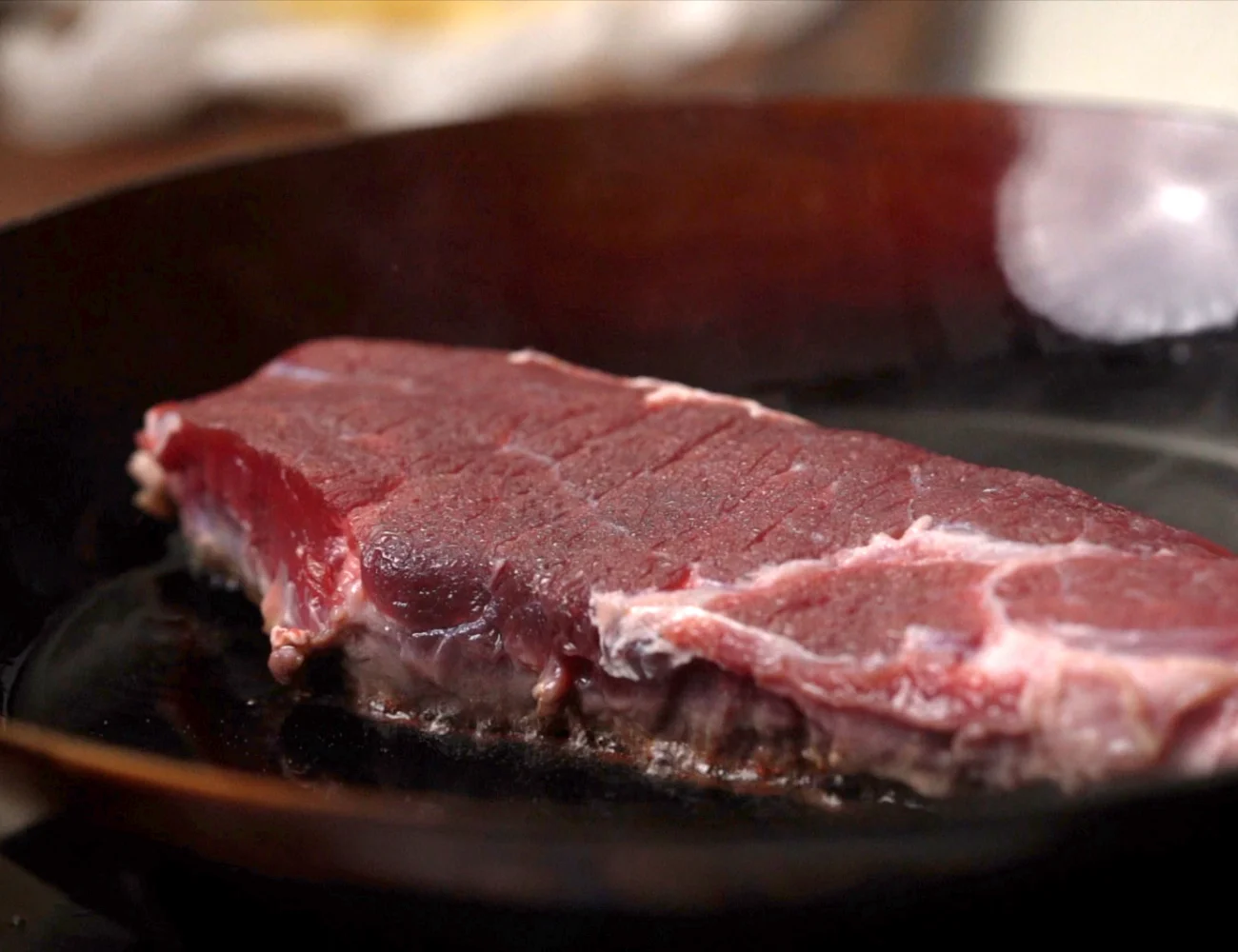
We only need to sear the steak for a couple of minutes per side (as you’ll see in the video). Sear until the surface steak of the steak looks like the ours (seen below). Then, flip it and sear the other side of the steak.
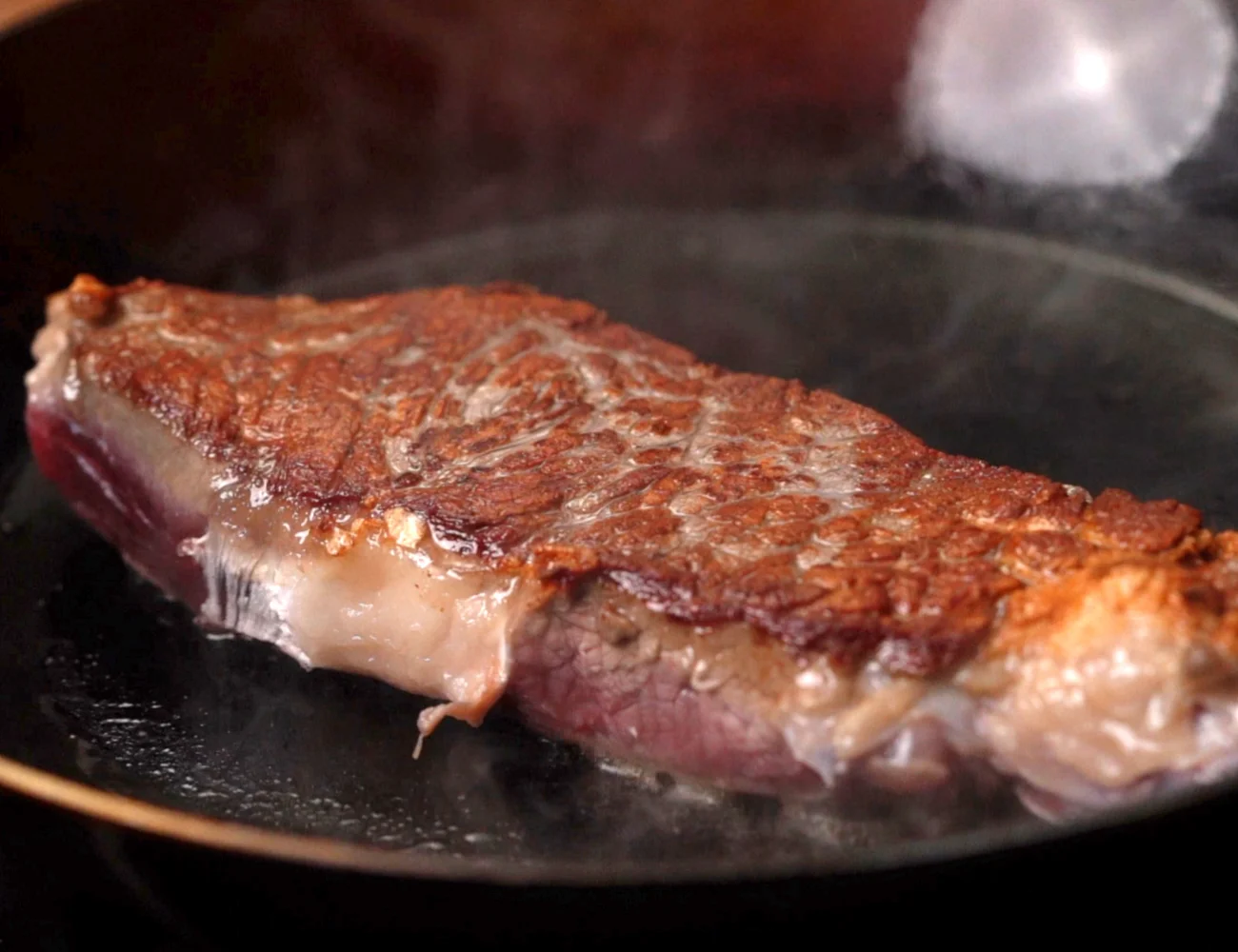
You’ll want to baste the surface with the hot butter, as we are doing here…
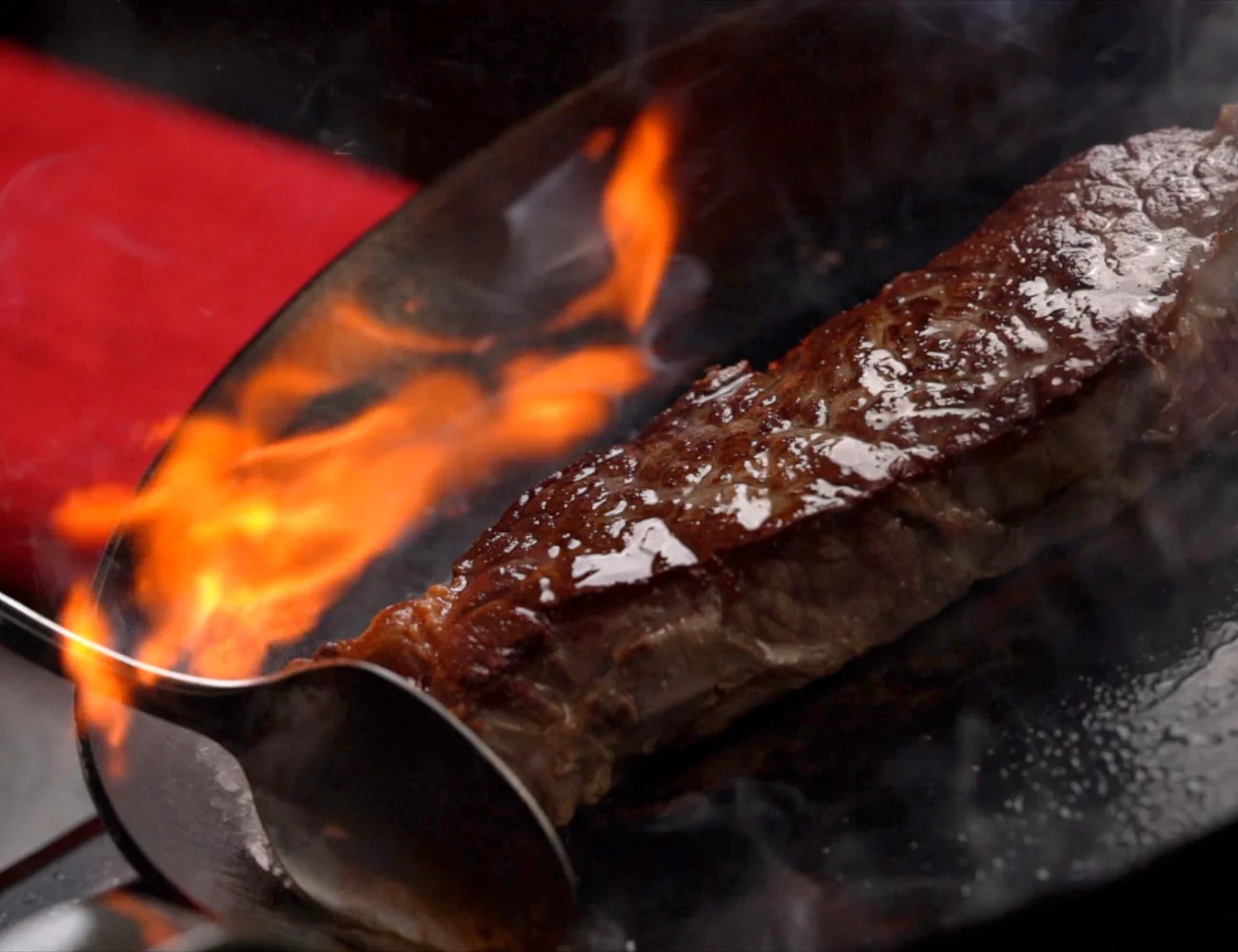
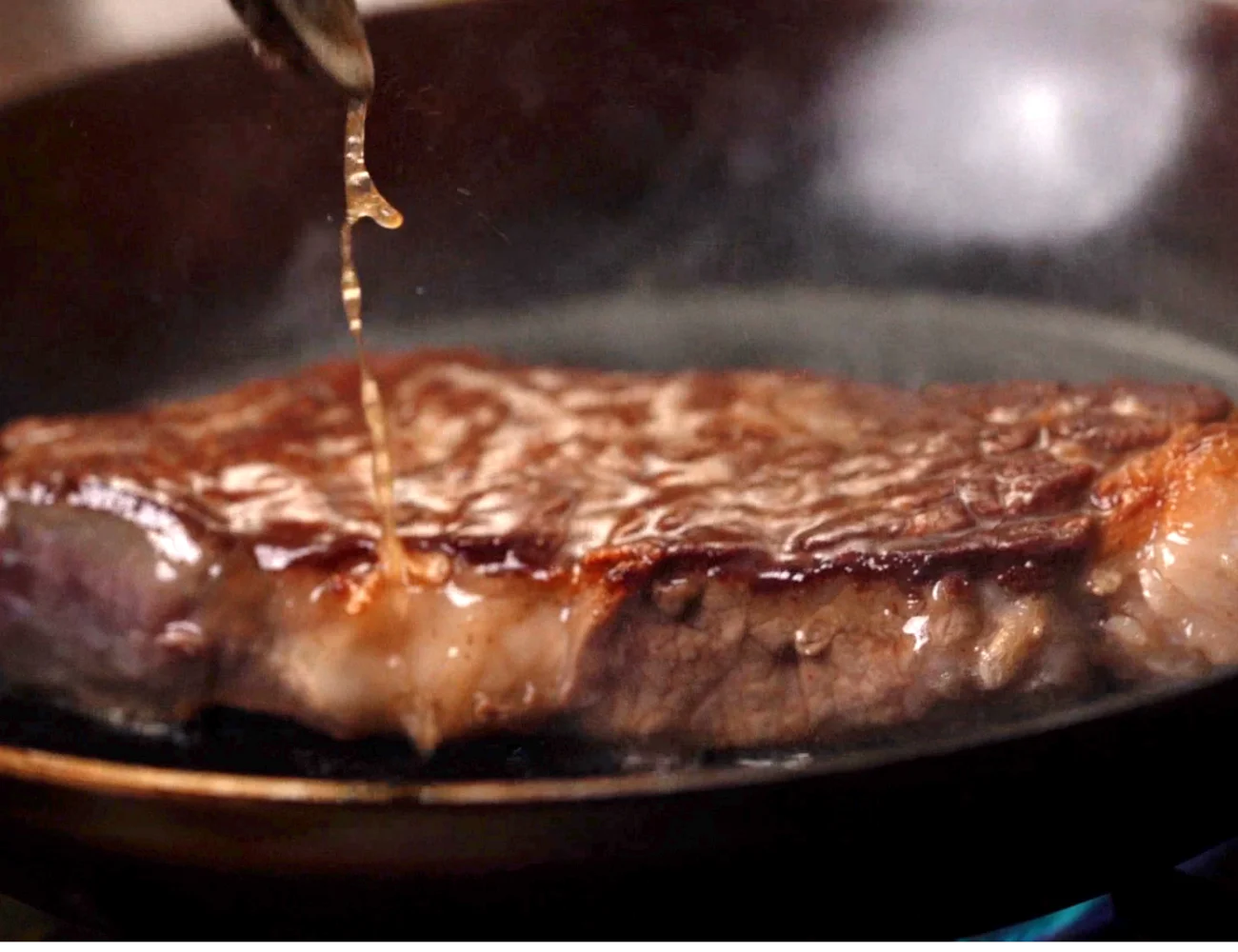
And finally, be sure to sear the sides of the steak as well!
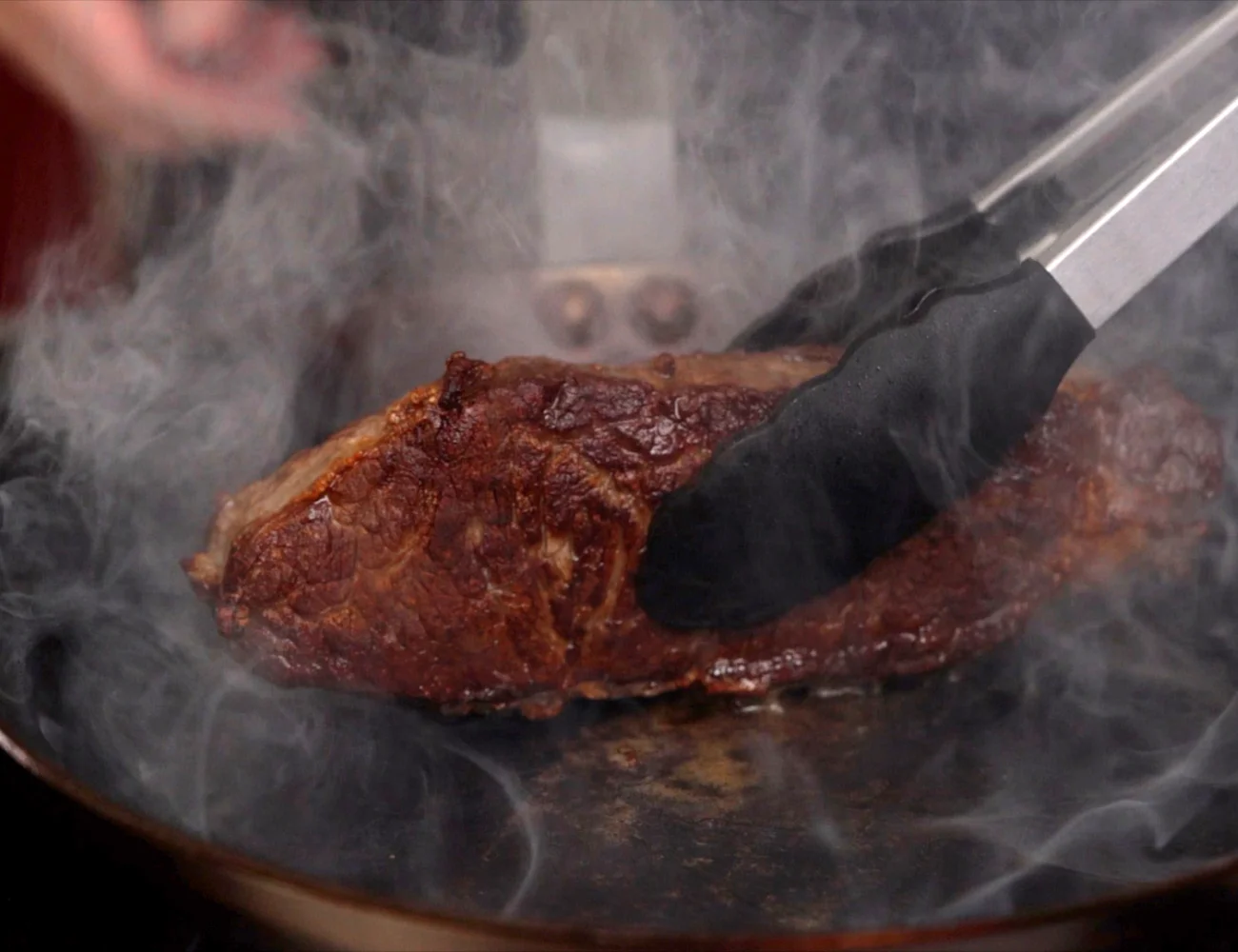
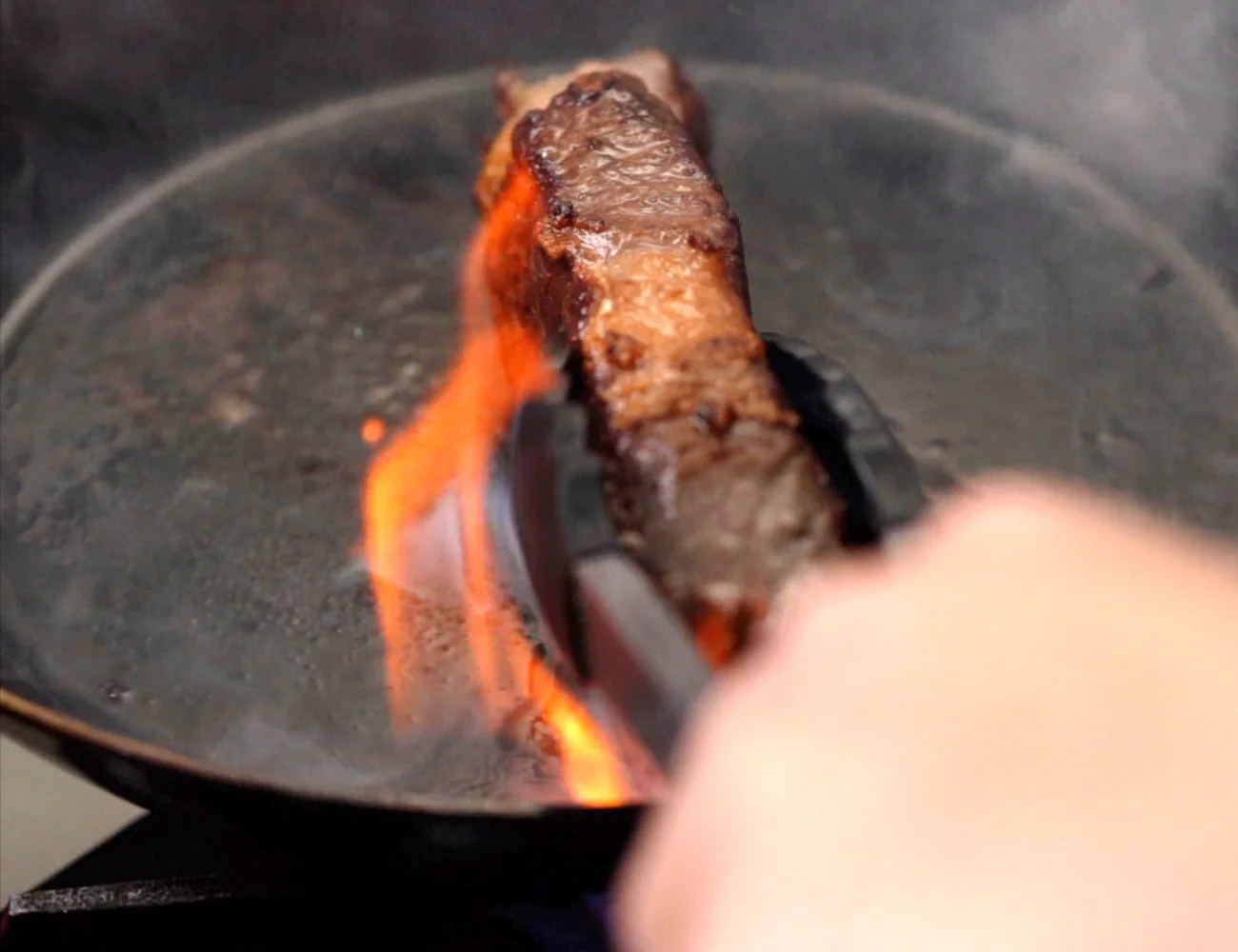
Let the Steak Rest Before Cutting It!
Once the steak is properly seared and ready, it’s time to let it rest! This is not optional!!
Let the steak rest for ten minutes before cutting it, under penalty of losing the juices! This is because the juices are in the center of the meat right after you remove the steak from the heat. It takes a few minutes for the juices to redistribute throughout the steak. So we leave the steak rest for at least 5 minutes—10 minutes if we manage to resist the temptation.
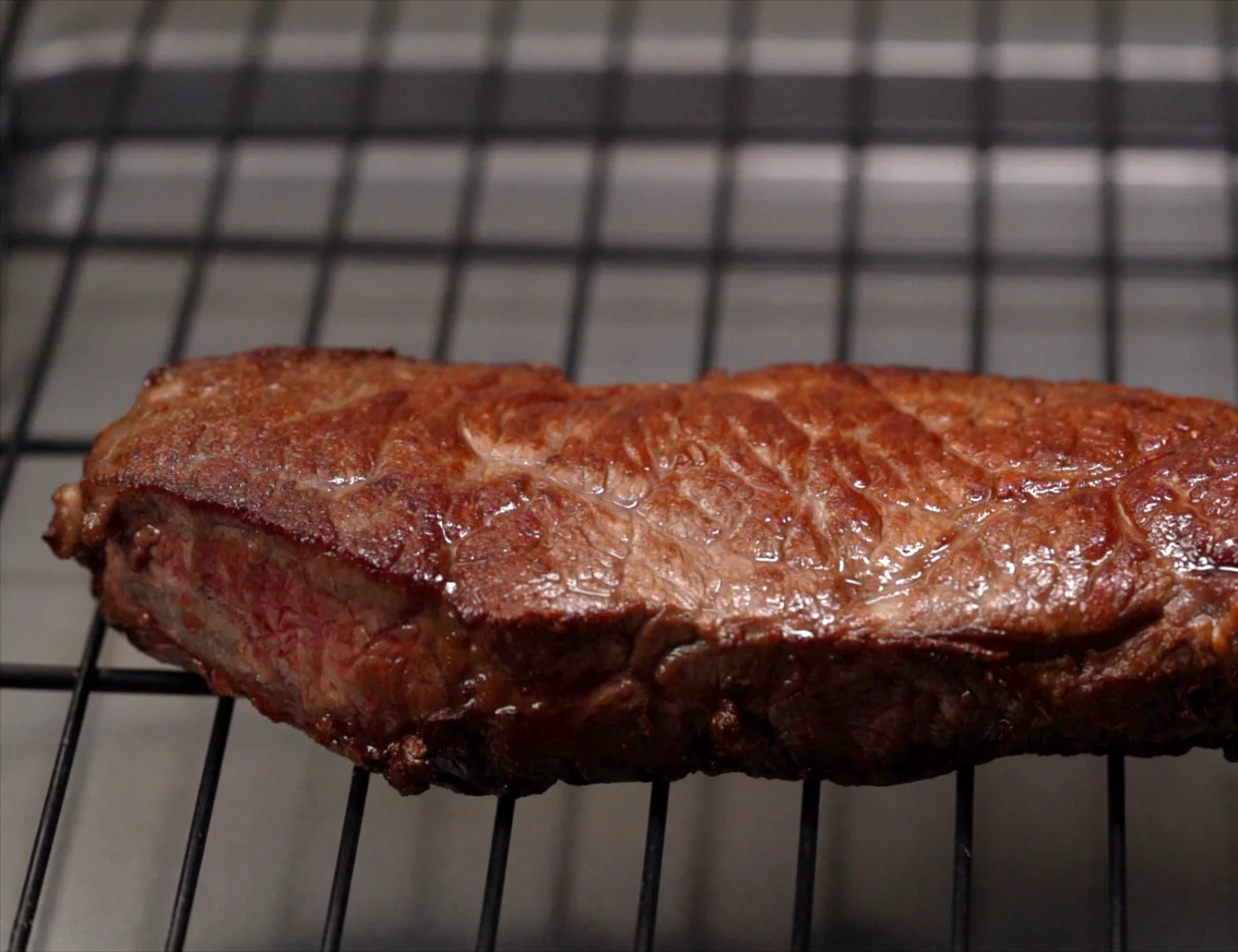
In the meantime, you’ll want to warm the plates you plan to serve the meat on (to about 113° F or 45° C).
De-Glaze, Demi-Glace?
Once the steak is cooked, we like to de-glaze the pan with a demi-glace, add a few drops of our favorite balsamic vinegar, let it reduce… and filter!
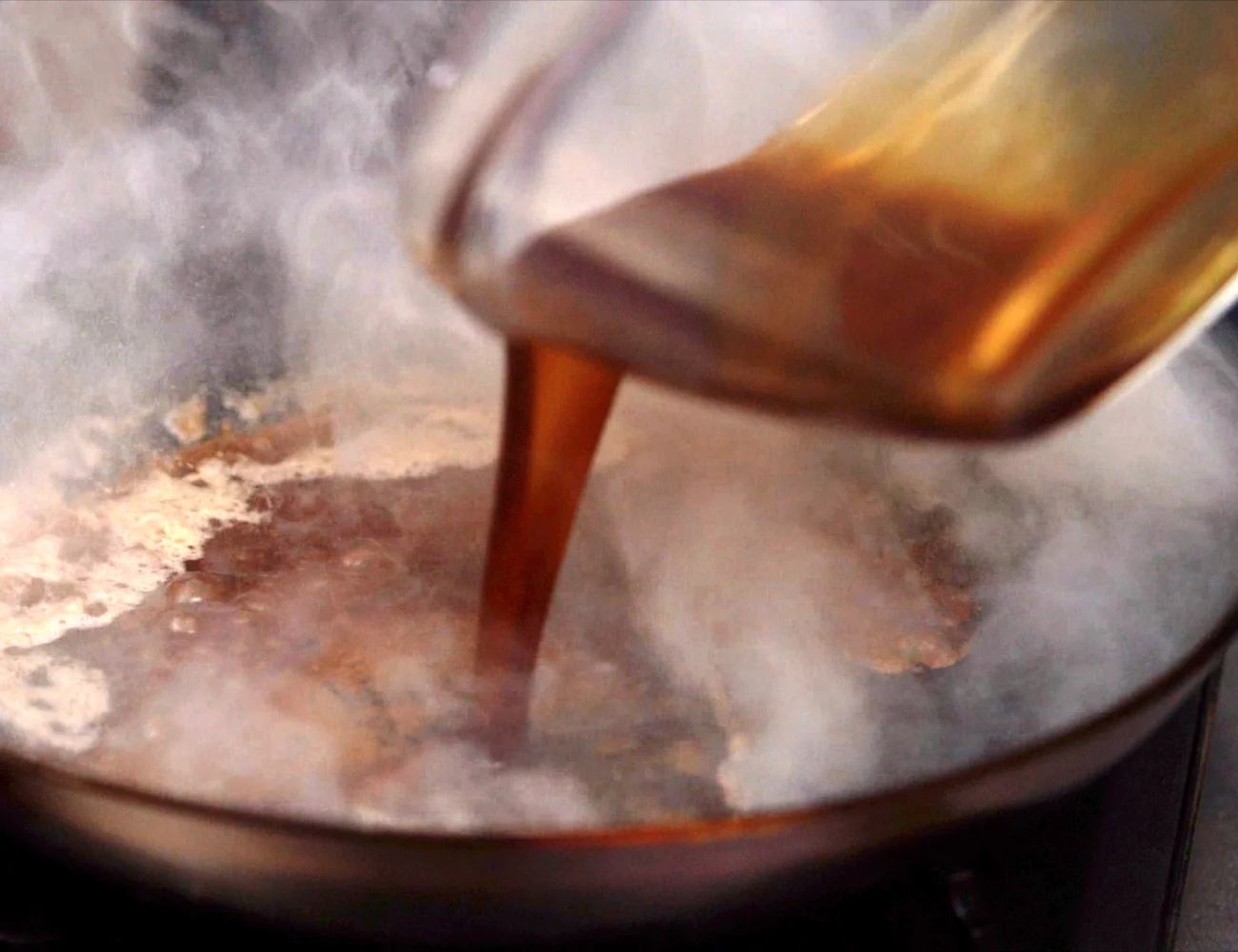
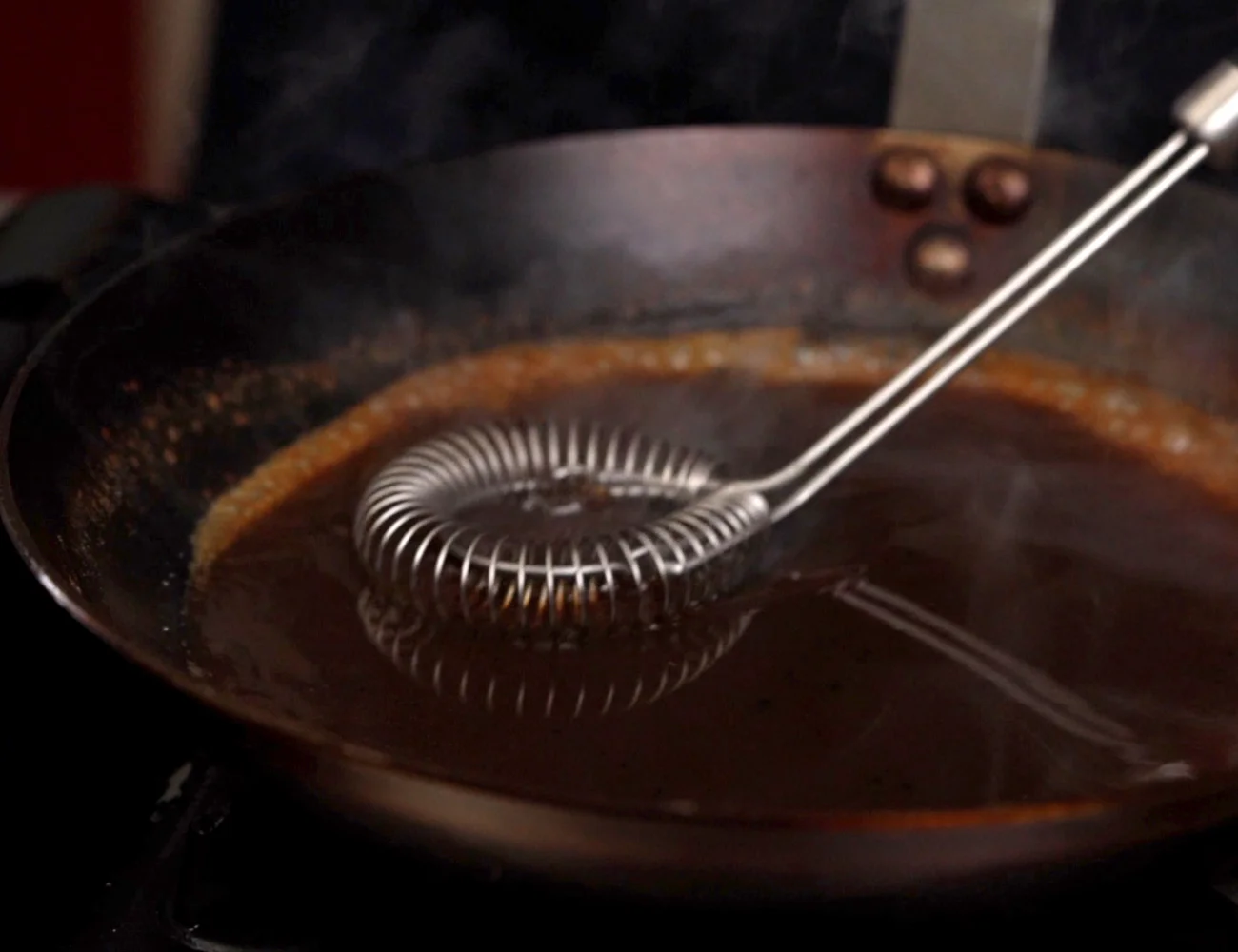
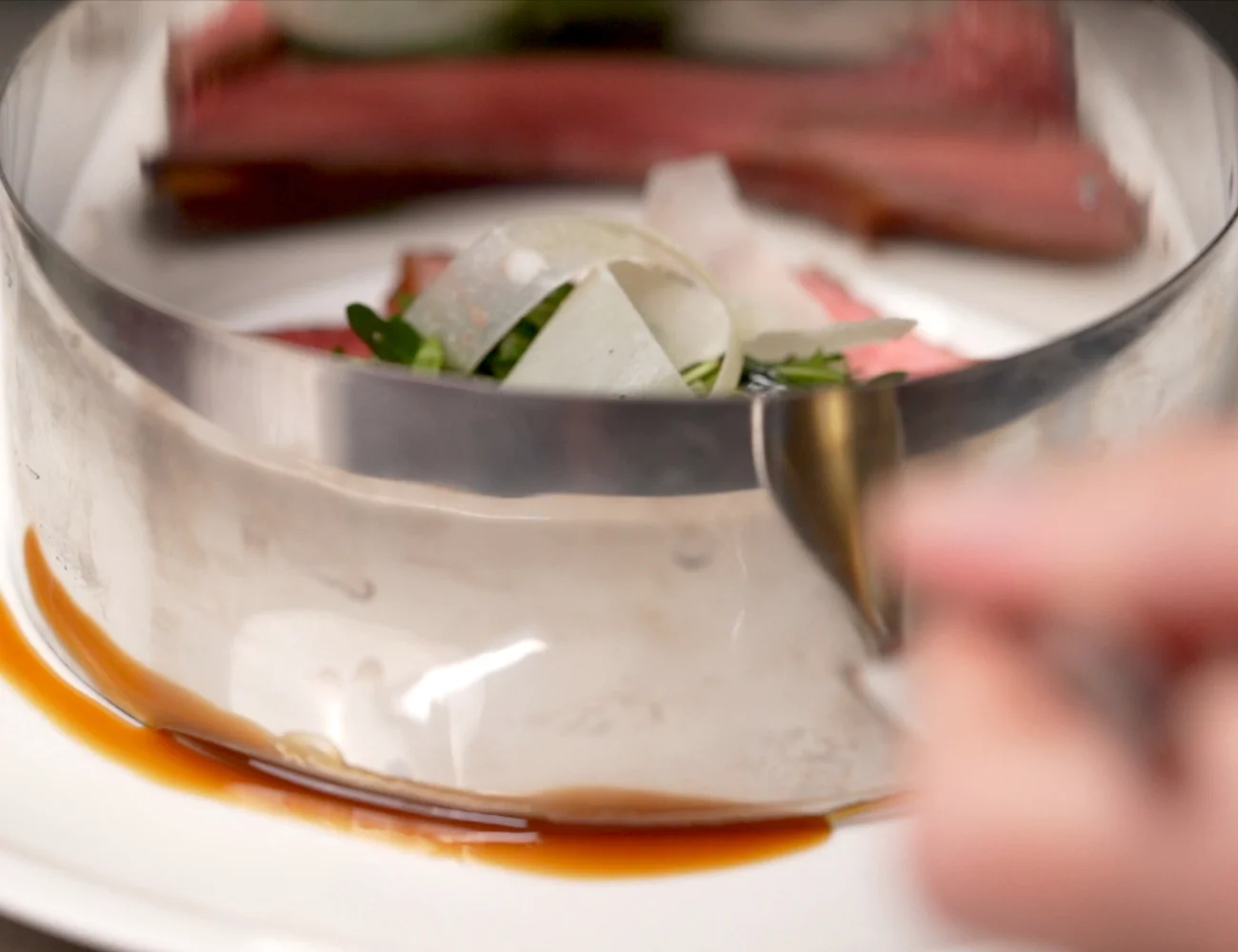
Discover More Italian Food Recipes!
As an Amazon Associate, we earn from qualifying purchases. This means at no extra cost to you, PIATTO may earn a small commission if you click the links and make a qualifying purchase.
How to Cook Sirloin Steak in a Pan—Perfectly!
Equipment
- 1 seasoned cast iron or carbon steel pan about 14" in diameter
- plastic wrap
Ingredients
- 1 lb aged sirloin steak "controfiletto"
- fine salt to salt the steak
- 2 tbsp clarified butter to sear the steak
Instructions
Prepare the Steak
- Salt the steak generously on both sides, pressing the salt into the meat.fine salt, 1 lb aged sirloin steak

- Wrap the salted steak in plastic wrap. Then, let the steak rest for about 2 hours in the fridge.

- After the 2 hours rest, let the steak come to room temperature for about 1/2 hour before cooking it. At this time, you'll also want to remove any excess fat or extraneous parts of the steak—which can be used to make broth or a stew. During the rest time, you can prepare any sauces or condiments you may want for your finished steak.

Pan Sear the Steak
- Over high heat, bring a seasoned cast iron or carbon steel pan to a temperature of around 662° F (350° C). Melt a few tablespoons of clarified butter in the pan.2 tbsp clarified butter

- Cook the steak for a couple of minutes per side—until the surface of the steak is golden brown but not burnt (see photos).

- Then, flip the steak and sear the other side.

- You’ll want to baste the surface of the steak with the hot butter during the cooking, as shown.

- Sear all sides of the steak as well.

Rest the Steak (Covered)
- Once the steak is properly seared and ready, it’s time to let it rest! This is not optional! Let your steak rest 5-10 minutes before cutting it, under penalty of losing the juices inside! It's best to cover it loosely with foil while it rests.Read the whole article on this page for a thorough explanation as to why the rest is needed.In the meantime, you’ll want to warm the plates you plan to serve the meat on to about 113° F (45° C).


